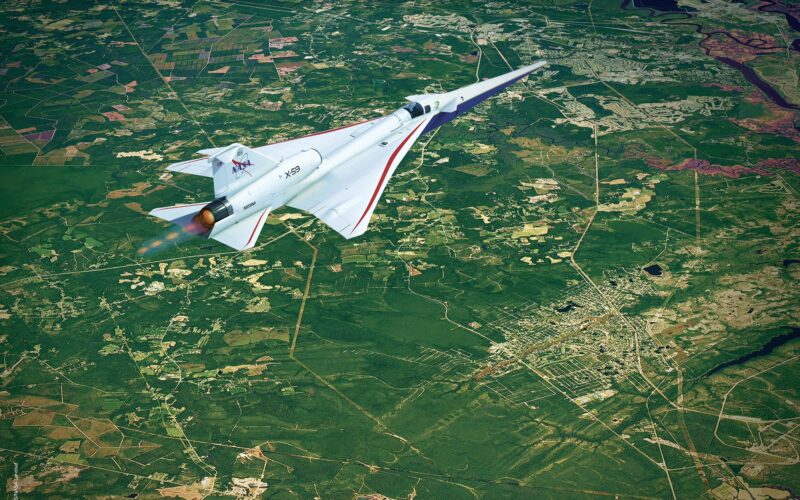The return of passenger supersonic flight is perhaps one of the most exciting areas of aviation currently in development.
A number of companies such as Boom and Spike are already making huge strides while competing to be the first to start commercial operations.
NASA is also playing a huge part in the evolution of a new generation of supersonic aircraft with a history of research into ultra-high-speed travel stretching back more than 70 years.
Working in partnership with Lockheed Martin, NASA has developed the X-59 aircraft which is designed to rid supersonic travel of sonic booms and replace it with a less disruptive “sonic thump”.
If as expected, NASA can expel the sonic boom from operations then supersonic travel over land becomes a real possibility.
Due to sonic booms and sound disturbance, supersonic travel is banned over land which has limited its scope, and revenue opportunities, over recent decades.
Lockheed began building the X-59 in November 2018, and it is expected that the first test flights will commence in 2024.
Following that Lockheed will deliver the X-59 to NASA where it will conduct test flights within the supersonic test range above NASA’s Armstrong Flight Research Center and Edwards Air Force Base in California.
These flights will prove the aircraft is as quiet as it’s designed to be, in preparation for flights in the National Airspace System.
However, before all the flight tests begin the X-59 will be officially unveiled publicly for the first time under the world’s gaze.
On December 11, 2023, NASA confirmed that the quiet supersonic aircraft will be revealed on January 12, 2024, at 1 pm Pacific Time.
We've got big news: @NASA's quiet supersonic aircraft, the X-59, will officially be unveiled on Jan. 12, 2024!
— NASA Aeronautics (@NASAaero) December 11, 2023
Mark your calendars and stay tuned for info on how you can watch the rollout ceremony of the X-59.
Get the latest on the #Quesst mission here: https://t.co/sY1UDKsZbG pic.twitter.com/SMubzBchKs
“We’ve got big news: @NASA’s quiet supersonic aircraft, the X-59, will officially be unveiled on Jan. 12, 2024! Mark your calendars and stay tuned for info on how you can watch the rollout ceremony of the X-59,” the space agency wrote on social media.

